
The journey from molecule to field; Swiss innovation in action.

Where innovation meets tradition
Agriculture is entering a transformative era. Although the green revolution has been successful in feeding a rapidly growing human population, it has also depleted the Earth’s soil and its biodiversity and contributed to climate change. These extractive practices are not sustainable. We must move quickly to transform agriculture by employing a suite of practices known as regenerative agriculture.
Regenerative agriculture blends sustainable innovation with tradition. As the name suggests, it focuses on literal regeneration of the soil and of the planet’s ecosystems. Regenerative agriculture improves soil, delivers high productivity and high-quality food and helps fight climate change and restore lost biodiversity.
Many of the key practices of regenerative agriculture – intercropping, where multiple crops are planted together, agroforestry, and integrating livestock, for example – have their roots with indigenous farmers who work with the land rather than against it. At Syngenta Group, we believe regenerative agriculture can underpin the transformation of our global food systems.
Regenerative agriculture (RA) is an outcome-based food production system that nurtures and restores soil health, protects the climate and water resources and biodiversity, and enhances farms' productivity and profitability. It comprises a range of techniques, supported by innovative technologies, which can combat the challenges cause by climate change by restoring the health of soil and protecting the land’s ecosystem.
Regenerative agriculture is an evolution of conventional agriculture, reducing the use of water and other inputs, and preventing land degradation and deforestation. It protects and improves soil, biodiversity, climate resilience and water resources while making farming more productive and profitable.
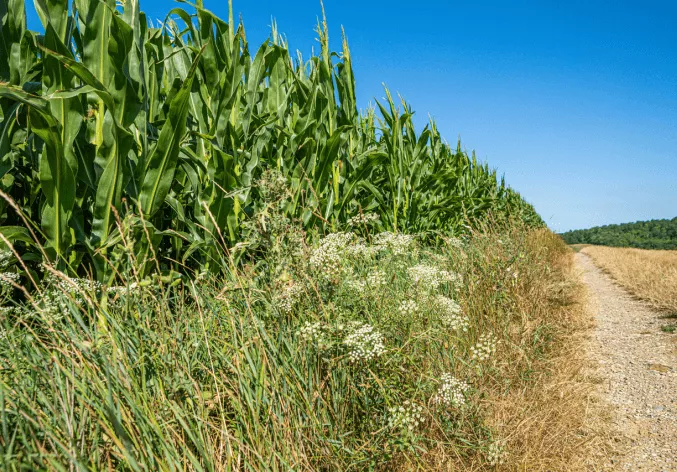
Goals of regenerative agriculture
The agricultural sector needs to transform, and regenerative agriculture can enable this transition through building up soil organic matter and nurturing its health. But it is not a one-size-fits-all solution – instead, each unique context requires a different set of farming approaches to maximize productivity while restoring soils and biodiversity. Different regenerative practices suit different regions or even individual farms depending on the conditions, although they are underlain by a common set of principles.
When soil is plowed or tilled, it’s structure is damaged, leaving it vulnerable to wind and water erosion and microbial decomposition. Tilling lessens the soil’s ability to retain water, devastating crops during increasingly frequent droughts. Farmers practicing regenerative agriculture greatly reduce or stop tillage and instead plant seeds directly into the residue of the previous crop. With this, the soil contains more organic matter and is less prone to being blown away by wind or washed away by water.
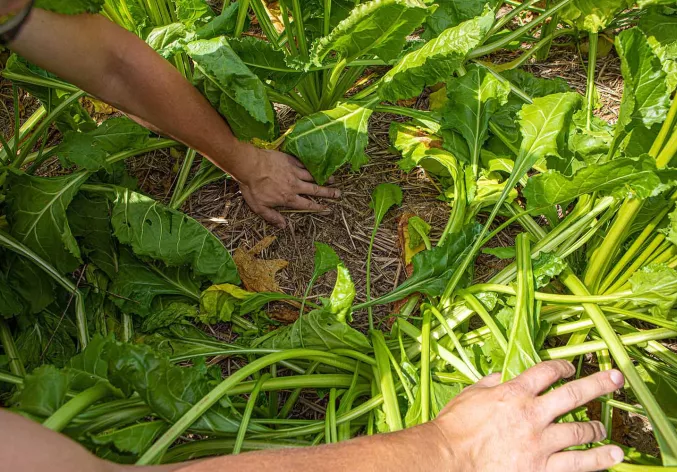
Plants in the ground year round
Soil health improves when crops are kept in the ground year-round. Regenerative agriculture farmers plant a different crop immediately after harvest, often alternating cash crops and cover crops. This green cover shades the soil and the roots dig into it, increasing moisture.
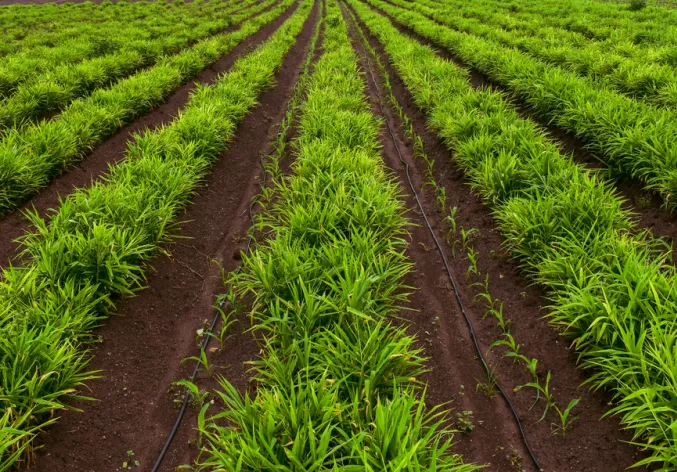
Diversify crops in time and space
Planting the same crops on the same fields, year after year, strips soil of nutrients and allows pests and weeds to flourish. In regenerative agriculture, farmers rotate different types of crops over time. This helps limit pest infestations and nourishes beneficial microbes in the soil with a more diverse diet. Rotating between nitrogen-fixing crops like soybeans and nitrogen-hungry crops like corn can reduce the need for fertilizers.
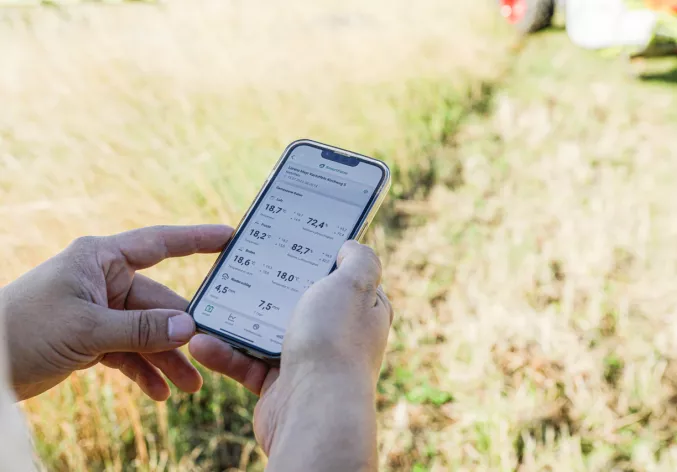
Optimize application of biological and chemical inputs
Data-driven precision farming is a key part of regenerative agriculture. Farmers use digital tools, like soil-scanning sensors, to create detailed field maps and tailor applications of crop protection products and fertilizers. This leads to using only the optimal amount and the right type of product needed for a productive crop.
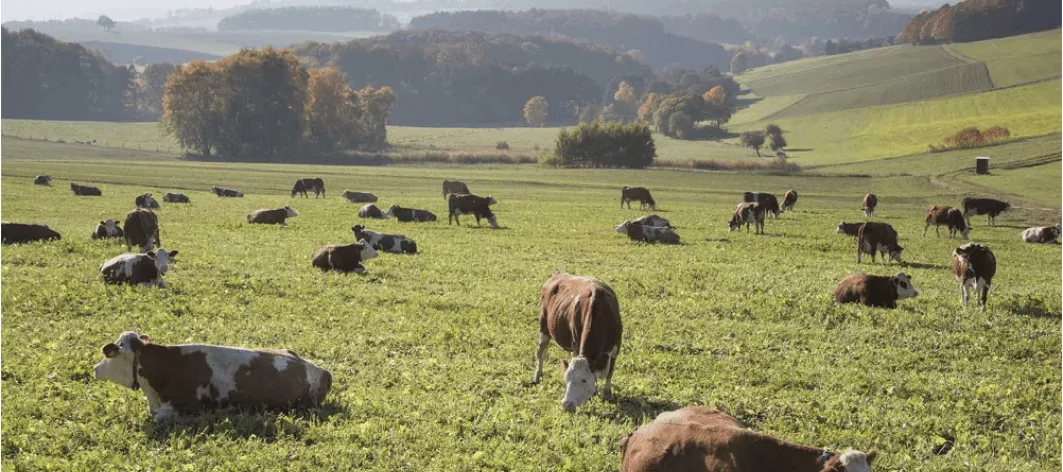
Integrate livestock when possible
Livestock – cows, goats, sheep, chickens, and pigs – are walking bioreactors, transforming plant material into rich organic matter through manure production. Whenever it is practical to integrate livestock into crop production, there are a range of benefits including increased fertility and improved soil structure. Grazing cover crops or crop residue at the end of the season helps prepare the land for the next round of seeding, without tilling.

Can regenerative agriculture reverse climate change?
Around 22% of anthropogenic greenhouse gases come from agriculture, forestry, and other land uses, according to the Intergovernmental Panel on Climate Change (IPCC). One model also estimates that agricultural land use has contributed significantly to the loss of carbon from the soil over 12,000 years – 133 Pg C from the top 2 meters of soil, or 8% of total global carbon soil stocks.
Yet soils are one of the Earth’s most important carbon sinks, holding more carbon than all of the world’s vegetation plus our atmosphere combined. When practices that maximize carbon inputs to soils, such as planting cover crops, are combined with practices that minimize carbon losses, like no-till, soils can sequester significant amounts of carbon each year. Regenerative agriculture has the potential to transform agriculture from a source of greenhouse gases towards net carbon drawdown.
Changes in farm practices could sequester nearly a billion tons of carbon dioxide around the world every year.
Turning farms into carbon sinks, reversing desertification, and preventing land conversion could together limit or even reverse climate change – and safeguard the global food system.
We still have a long way to go in restructuring global agriculture and our food system and the need for investment, cooperation and leadership is urgent.
Dry Land Gets New Life
Can a pioneering farming family really combat climate change with regenerative agriculture?
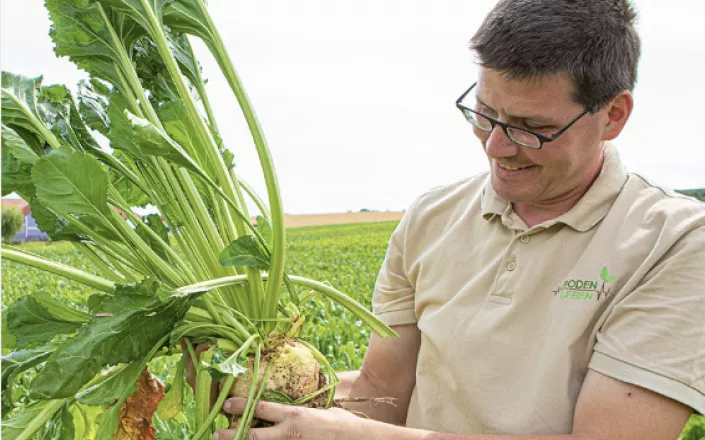

Modern agriculture has done a remarkable job of feeding the 7.9 billion world population. Yet with the global population projected to reach 9.7 billion in 2050, agriculture faces increasing challenges from degraded land, unprecedented weather extremes, new pests and blights migrating from other parts of the world and diminishing water resources.

Regenerative Agriculture can Improve Both the Quantity and Quality of Food Crops.
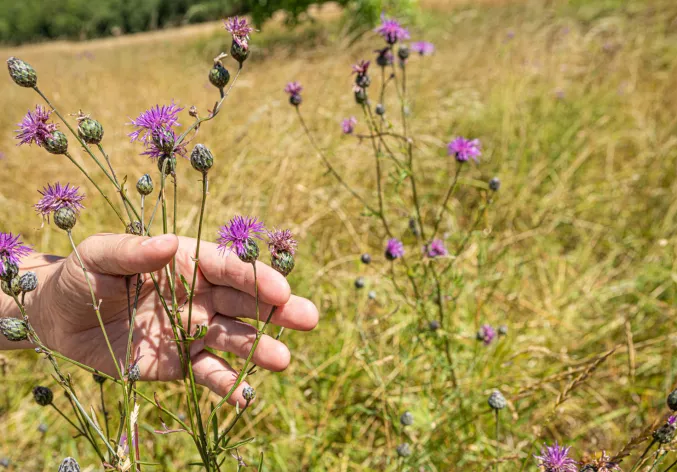
Can Regenerative Agriculture Restore Lost Biodiversity?
Regenerative agriculture farmers are ecosystem stewards. Regenerative farming practices, with a focus on soil health, nurture biodiversity both below and above ground.
All the principles of regenerative agriculture – limiting soil disturbance with no-till or reduced till, keeping the ground covered all year round, rotating crops, reducing biological and chemical inputs, and integrating livestock – nourish biodiversity.
Around 25% of the World’s Biodiversity is Found Underground.
Regenerative agriculture has the potential to help repopulate the surrounding ecosystem with beneficial fungi, insects, mammals, and birds. A diverse set of crop and livestock rotations progressively interrupt destructive weed cycles, and the entire ecosystem of a farm becomes more resilient to shocks such as extreme heat, drought, and floods, and to invasive weeds, pests, and fungi.
As a science-based company, Syngenta Group drives innovation that enables farmers to adopt regenerative practices across the world. We develop technology that can help farmers apply regenerative practices, and research the best ways of applying regenerative agriculture in the field.
Syngenta Group technology focus
Examples of Syngenta Group breakthrough innovations
Rewarding farmers for employing regenerative agriculture practices
Collaborating with PepsiCo, Syngenta has launched an initiative to promote sustainable farming practices in the food industry value chain. Through the Sustainable Sourcing Program, farmers implement and trace regenerative practices such as crop rotation, cover crops, and pollinator habitat development.
Participating farmers receive a premium for their sunflower grain, incentivizing sustainable methods. In its first year in Argentina, the program delivered 4,000 tons of sustainably produced sunflower oil to PepsiCo.
With plans to expand the program by at least 25 percent in the next phase, Syngenta aims to increase both environmental benefits and farmer profitability, demonstrating its commitment to sustainable agriculture.
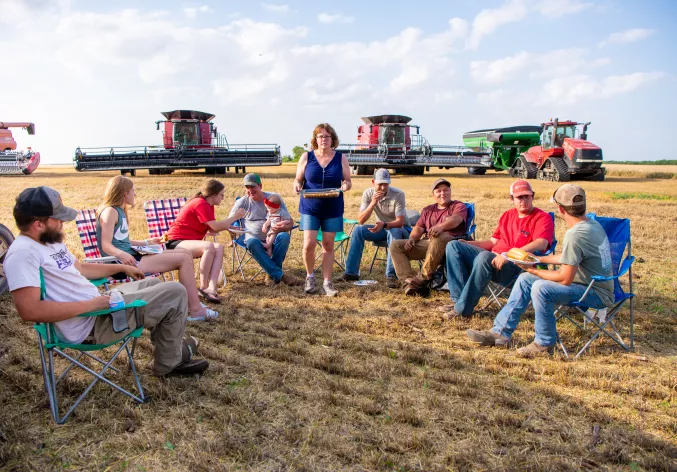
Who is affected by regenerative agriculture?
Interest in regenerative agriculture is growing across the entire food value chain. It is a response to growing food insecurity and increasing threats from climate change, and a recognition that agriculture is part of the solution to both the world’s biggest challenges. Food – and other products – that are more friendly to the environment are also a big trend among consumers in the US and other countries, especially among Millennials.
Large food value chain companies are committing to source ingredients produced through regenerative practices. Nestlé, the world’s largest food and drinks company, is committed to source 50% of key ingredients through regenerative agricultural methods by 2030. PepsiCo, the second largest, committed to regenerative practices across 7 million acres by 2030. Other companies with regenerative agriculture commitments include Cargill, General Mills, McCain and Walmart.
Many partnerships are also being formed to help farmers adopt regenerative agriculture. Syngenta Group and The Nature Conservancy are collaborating on business practices to improve sustainability including soil health, resource efficiency and habitat protection. We also work with many others, including the World Business Council for Sustainable Development, Solidaridad, Cargill, and Kellogg’s.
How Regenerative Agriculture Thrives at Moreland Farms
Since Moreland Farms began transitioning to no-till farming and constant crop rotation in 1996, there have been consistent yield increases and other environmental and economic benefits.
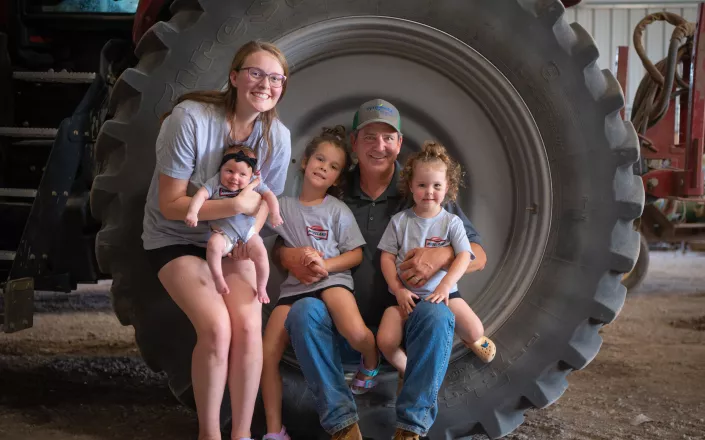

Regenerative agriculture has the potential to make farming a solution to climate change, which benefits the planet, humanity and all other life on it. Within that, there are many tangible benefits. Some examples:
For farmers
Regenerative agriculture practices, when customized to individual farms’ needs, have potential to increase the income of farmers and the profitability of farms.
As one example, research from intensive corn and soybean farms in the US shows that adopting soil health management systems increased net farm income by an average of $52/acre for corn and $45/acre for soybeans. Management practices included conservation tillage, cover crops, and precision fertilizer management. 97% of surveyed growers reported increased resilience to extreme weather such as drought and heavy rain.
Limiting deforestation and grassland conversion
Regenerative agriculture practices help restore degraded farmland through improving soil health. This can lead to increased yields from existing arable land, preventing the need for farms to expand and cause deforestation as they do so.
In Brazil’s Cerrado, regenerative agriculture practices such as minimum tillage and planting cover crops have been shown to increase soil organic matter. Along with proper management of soil health, this is enabling the profitable restoration of unproductive, degraded pastures. The result: with 1 head of cattle per ha to cropland producing 3-4.5 t of soybeans, 3-6t of corn, and beef cattle grazing on cover crops all in one year.
Enhancing biodiversity
One of the goals of regenerative agriculture is to restore threatened biodiversity and enhance natural habitats. Regenerative agriculture practices such as planting field strips provide habitats for many types of biodiversity from pollinators to birds and small mammals, allowing them to thrive. Practices such as no-till improve soil health, nourishing underground microorganisms and increasing the diversity of creatures living below the surface.
Optimizing inputs
One of the principles of regenerative agriculture is reducing biological and chemical inputs. Digital tools allow farmers to better understand their fields and crops and target applications of products, so reducing the amounts used
For consumers
One of the aims of regenerative agriculture is to ensure enough nutritious food for everyone, giving consumers greater food security and improved health. Regenerative practices lead to a more resilient food system, which decreases the risk of empty shelves arising from climate impacts on food production. As soil health improves, the microorganisms that live in soil help plants access micronutrients and produce phytochemicals that are linked to disease prevention and longer lifespans.
A Trailblazer Who Is Rebuilding The Soil
Hans-Heinrich Grünhagen is a multi-faceted farmer, both a traditionalist and a trailblazer. Climate changes are intensifying the problems and there is an intense focus on soil. That means a lot of experimentation with regenerative agricultural practices.
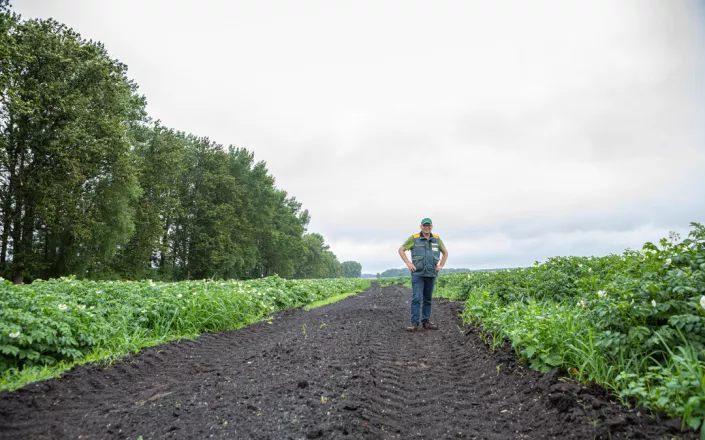

More investment is needed to accelerate the widespread adoption of regenerative agriculture practices, and farmers, policymakers and agricultural companies need to work together.
Today, farmers carry a heavy burden of costs – seeds, equipment, overheads, for example - and take much of the risk of growing food crops despite uncertainty about weather, water and market prices. Changing farm practices brings greater costs at the start. Despite that, larger farms and progressive growers are forging ahead.
The transition can’t be left to farmers alone, and governments need to support them by rethinking existing farming policies to make regenerative agriculture economically attractive. Subsidies can be restructured to incentivize farmers to phase out soil-degrading practices in favor of approaches that build healthy, fertile soil while sequestering carbon.
The private sector also has an important role. Companies including Syngenta Group can take a lead by delivering a set of starter regenerative solutions that generate measurable results for farmers within one growing season. At Syngenta Group, we engage farmers by working closely alongside them. We do this both in the field – by bringing them knowledge and tools - and off the land – for example, by helping integrate farmers into the food supply chain via partnerships and collaborations.
Stay informed
Receive Syngenta Group press releases directly per email
